Can You Hammer a Nail into Concrete?
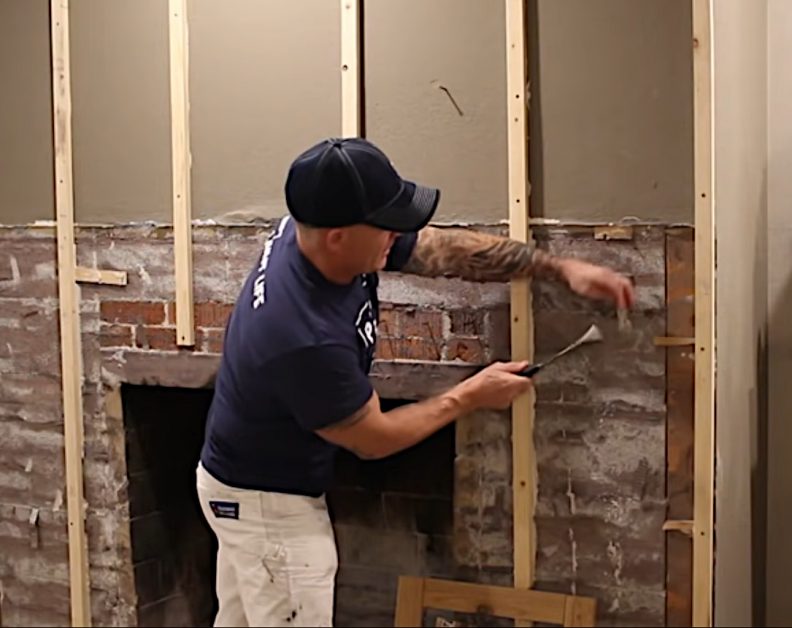
This article will answer a common question when making repairs or improvements in the house: “Can you hammer a nail into concrete?”
As you know, concrete is much tougher than wood, so ordinary finishing nails cannot be used for hammering into concrete. They would bend too easily. Fortunately, there are ways to hammer nails into concrete by using special nails or applying special techniques.
Below we will only consider ways that use a hammer and focus on nails rather than screws.
Hammering Special Nails into Concrete
Method 1: Using Steel and Masonry Nails
The most common way to nail into concrete is to use steel nails, specially made for embedding into concrete.
Also known as concrete nails, they are made from high-carbon (around 0.5-0.75%) hardened steel and do not bend easily. They are easily recognizable by their shiny silver color and are generally thicker than ordinary nails. They typically have spiraled or fluted shafts, which aid in sinking into the concrete, and squared or angular tips.
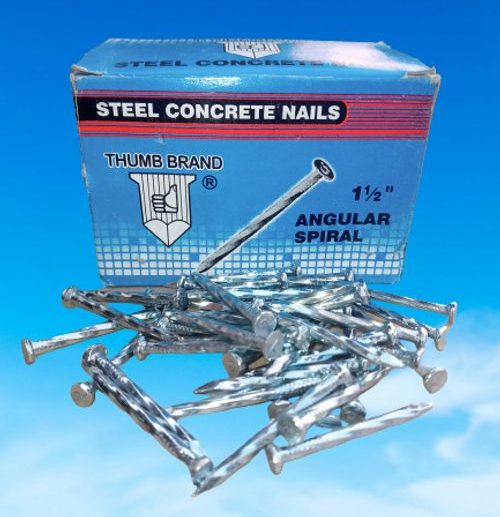
Masonry nails are similar in that they can also be hammered into concrete.
They are usually tapered and have a square cross-section. They are a cheaper alternative to using steel nails. A variation of them called cut masonry nails can provide a stronger grip.
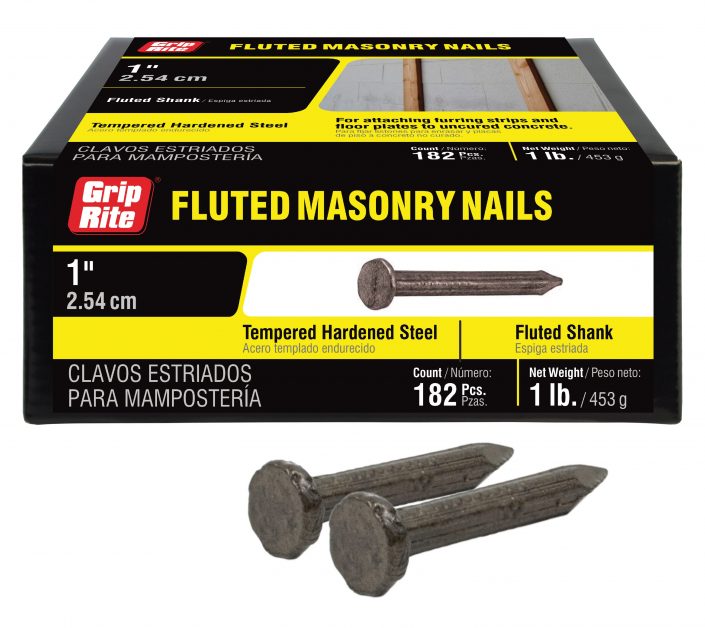
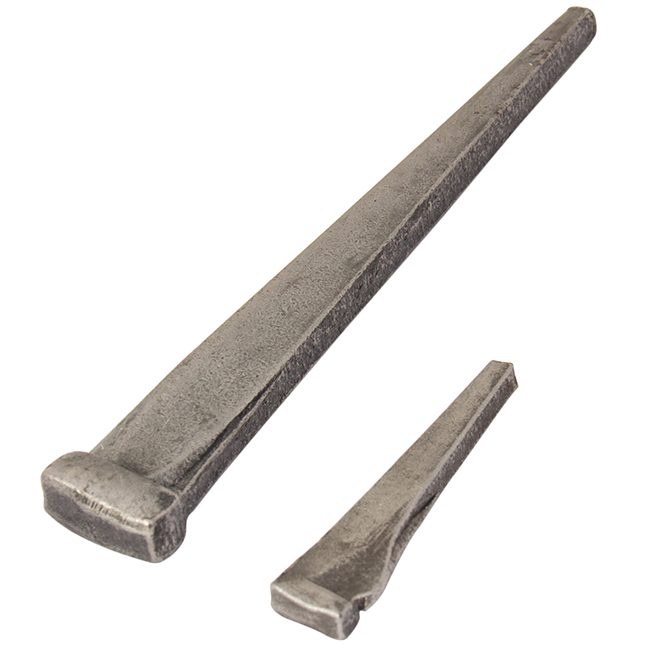
This method for hammering special nails into concrete works equally well for concrete and masonry nails.
Step 1: Mark the Point
Using a pencil, mark the point on the wall where you want to insert the nail. If you intend to hammer more than one nail, you might need to confirm all the marks are properly aligned before hammering.
Step 2: Position the Nail
Position the masonry nail against the concrete on the mark you made in step one.
Step 3: Tap the Nail
Tap the nail with a mash (or masonry) hammer to hold the nail securely in place.
Be careful, as mash hammers are much heavier than standard hammers. You can try using a standard hammer instead, but a mash hammer is more likely to drive the nail in more easily.
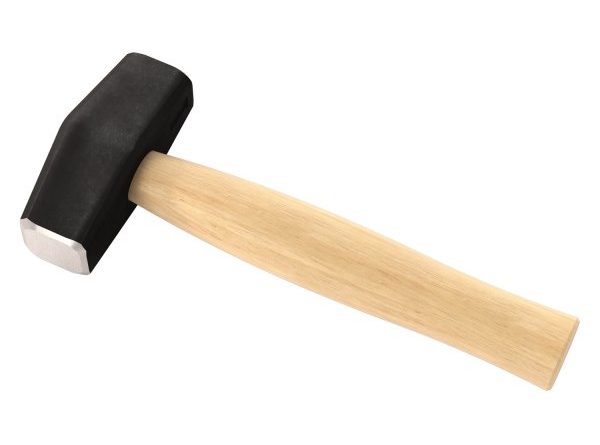
Step 4: Hammer the Nail
Now you are ready to drive the nail into the concrete with either hammer.
Take extra care to strike the nail’s head straight and not to miss. There is a risk that you could damage the wall otherwise. If that happens, apply white plaster to cover the damage.
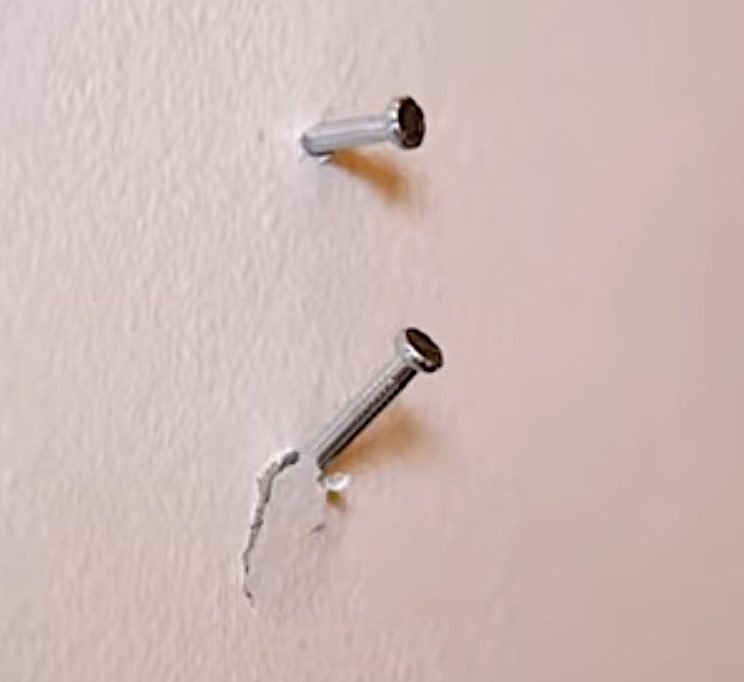
One question is how much to drive the nail inside the concrete. Unless the nail is small, a general rule for hanging things from concrete-embedded nails is to embed at least ¾” inside and allow about ½” an inch to stick out.
Special Techniques to Hammer Nails into Concrete
If you can get neither steel nails nor lag screws or insist on using ordinary nails for whatever reason, here are some special techniques you can use to hammer into concrete.
First, you will need to take extra precautions because these nails can bend, chip, and fragments can come in your direction.
Use eye protection, such as safety glasses or goggles!
Method 2: Using Ordinary Nails
Step 1: Position the Nail
First, position the nail where you want it to go.
Step 2: Tap the Nail Gently
While holding the nail in position, tap gently on its head. A tap or two should be enough to keep it in place.
Step 3: Position Yourself
Now, position yourself so you can easily hit the nail’s head square without changing the angle at which the nail will drive into the concrete.
Step 4: Hit the Nail
When you are ready, hit the nail head as hard as possible. Try to keep the strikes to a minimum.
You may find that the nail still bends too easily. If that happens, discard the bent nail and try again with a new nail or in a different position. If this happens too often, you will need to find steel or masonry nails or try something else.
Alternative Solutions
We did not consider some alternative solutions above because this article was about hammering nails into concrete.
These solutions rely on screws and tools other than a simple hammer. For example, a nail gun uses a .22 caliber cartridge to shoot nails into concrete. A powder-actuated fastener works similarly. (1)
If you cannot obtain steel or masonry nails, an alternative solution is to pre-drill a pilot hole as you would for screws and use special anchor nails or masonry screws.
However, this requires drilling. Another useful alternative, especially if the object you want to attach is heavy, is to use a lag screw. It has a shield made from a softer metal that can be hammered into the hole. When the lag screw is driven into the shield, it deforms and fits tightly inside the masonry.
Wrapping Up
We asked whether it is possible to hammer a nail into concrete.
This article showed that the answer is yes! We can achieve this using a hammer alone (without a power drill and screws) by using special nails called steel/concrete nails and masonry nails.
We showed that although an ordinary hammer can be used, a mash hammer is preferable.
We also showed the importance of positioning the nail properly when hammering into a concrete wall. (2)
Finally, we detailed a technique in case you cannot obtain these special nails. However, we recommend using either steel or masonry nails for concrete walls.
Take a look at some of our related articles below.
- How to screw into concrete without a hammer drill
- How to start a car with a screwdriver and hammer
- What size drill bit for 8-screw metal
References
(1) .22 caliber – https://military-history.fandom.com/wiki/.22_caliber
(2) concrete wall – https://www.ehow.com/about_5477202_types-concrete-walls.html
Video References
ecologicaltime
Paint Life TV
